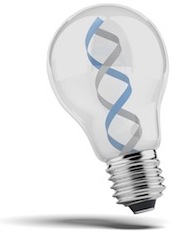Our history
The Otago Genomics Facility was opened in the Department of Biochemistry in July 2000 by Professor Tony Reeve of the University of Otago Cancer Genetics Laboratory. Professor Reeve saw the need for Otago researchers to have access to new high throughput microarray technology, which was being used internationally to profile gene expression.
The Facility provided researchers with an opportunity to analyse patterns of gene expression during normal growth and development, and in disease. It provided a complementary technology—laser capture microdissection (LCM)—to allow individual cells or tissues types to be profiled. The first arrays were made by printing cDNA clones on poly-lysine coated slides, but by 2003 the lab had switched to printing long synthetic oligos onto epoxy slides.
 In 2007 an Affymetrix array system was purchased. It replaced printed slides to facilitate applications like genotyping and cover a wider range of organisms. The size and scope of projects expanded greatly, and included a genome wide association study involving over 1500 genotyping arrays.
In 2007 an Affymetrix array system was purchased. It replaced printed slides to facilitate applications like genotyping and cover a wider range of organisms. The size and scope of projects expanded greatly, and included a genome wide association study involving over 1500 genotyping arrays.
During its infancy the facility provided assistance with rudimentary data analysis, including data normalisation and simple statistical analysis. It also provided training in the use of free web tools for clustering and gene set analysis. In 2006 Dr Mik Black was employed by the University to assist meeting the evolving need for more complex data analysis.
By 2008, next-generation sequencing had started to revolutionise the field of genomics. In 2009, the University was successful in obtaining a NZ$40 million government grant to host New Zealand Genomics Ltd (NZGL), resulting in the purchase of the first Illumina HiSeq2000 in New Zealand.
The Otago Genomics & Bioinformatics Facility became an Illumina Propel-certified service provider utilising high-throughput Illumina HiSeq 2500 and MiSeq sequencing platforms, and a Nanostring nCounter Analysis System Core Facility for New Zealand. The facility offered a team of skilled genomics and bioinformatics specialists providing a complete package of project design, data generation, and analysis for researchers.
In 2018 the facility refocused its services on the provision of Next Generation Sequencing (NGS) to researchers and industry. Our skilled genomics specialists continue to offer genomics advice, project design and data generation.
